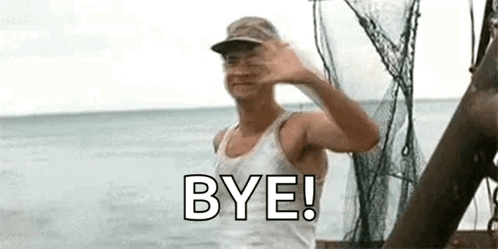Coffee With Tanya #28
Talking about: The internet's forgotten treasures, ancient Greek optical illusions that still fool us today, Stanley Tucci making us all want to move to Italy, and why three web design legends shaped everything you see online.
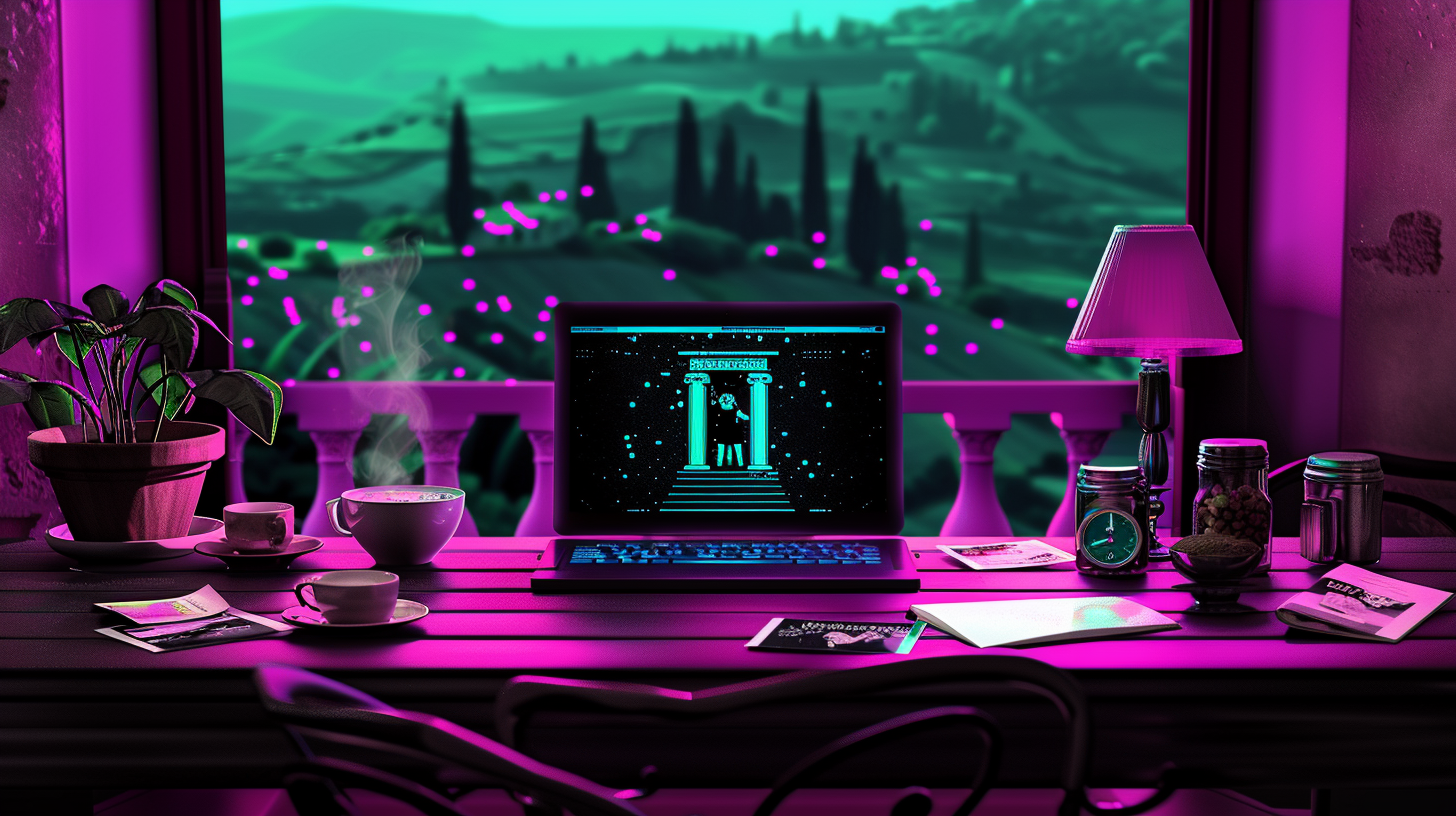
Hello, coffee lovers! Yes, we agreed that tea lovers are more than welcome 🍵
As we dive into the warm embrace of summer and longer days filled with possibility, I'm back with another collection of discoveries that have been sparking my curiosity lately.
This month has been rich with fascinating finds – from digital archaeology to ancient Greek optical tricks, and from Stanley Tucci's culinary adventures to the hidden gems of our internet past! ☀️
Here's what we have on our menu for today:
- Digital - Internet Artifacts: A museum of our online past 🌐
- Design - Why the Parthenon has no right angles (seriously!) 🏛️
- Travel - Stanley Tucci's love letter to Italy 🇮🇹
- Tech - 1440: Your new daily dose of "I didn't know that!" 📰
- Culture - The genius behind 90s web design wars 💻
- Word bites - Saudade 🔡
- June in History 🌍
"The greatest enemy of knowledge is not ignorance, it is the illusion of knowledge" // Stephen Hawking
Internet Artifacts: A Digital Museum of Our Online Past 🌐
The first piece will dive in straight into the past! First smiley 😄 First LOL...
Remember when websites looked like they were designed by your cousin's friend who "knew computers"? When every homepage had dancing GIFs and visitor counters?
Internet Artifacts is pure digital nostalgia gold!
This brilliant project showcases the weird, wonderful, and now-extinct corners of our online world.
What you'll rediscover:
- The original Space Jam website from 1996 (still live and gloriously unchanged!)
- Dancing baby GIFs that somehow entertained us for hours

- The first-ever banner ad (44% click-through rate – imagine that today! 🤯)
- Geocities homepages with magnificent rainbow backgrounds
This digital archaeology reveals our collective creativity under constraints.
When bandwidth was precious and tools were limited, people created with pure imagination. Those "ugly" 90s websites had more personality than many modern sites.
We've become sophisticated at creating websites, yet many modern sites feel too clean (and all look the same). Those early internet pioneers, working with primitive tools, often created more memorable experiences than today's polished corporate pages.
Sometimes the best innovations come not from unlimited resources, but from making magic with what you have! ✨
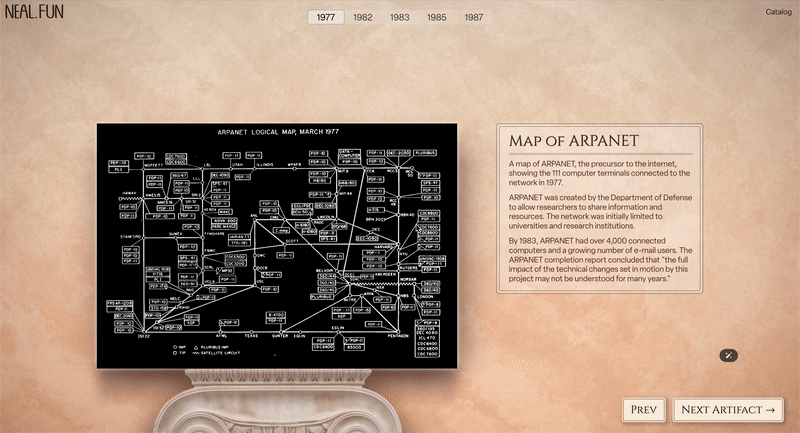
Why the Parthenon Has No Right Angles (What It Teaches Us) 🏛️
Here's a mind-blowing fact: The Parthenon has not a single right angle anywhere in its entire structure.
Every line, column, and surface is deliberately curved or tilted. It's not architectural incompetence – it's pure genius.
The optical thingy: The Greeks discovered that perfectly geometric buildings look dead 💀, so they systematically compensated for human perception quirks:
- The foundation curves upward by 11 centimeters along its 70-meter length
- Columns tilt slightly inward and would meet 5 kilometers up if extended
- Each column has a subtle bulge called "entasis" – they're gently curved, not straight
- The entire building is essentially a truncated pyramid disguised as a rectangle
Why this matters now?
Modern typography uses the same concepts – the letter "O" in your favorite font appears round but is actually taller than wide to compensate for how your brain perceives circular shapes.
Whether you're designing a website or arranging your living room, remember that what looks mathematically perfect often feels emotionally cold 🧊.
Sometimes the most beautiful solutions come from intentionally breaking geometry rules to honor human perception.
The Greeks built temples on hills not for defense, but to "spread their best around to everybody." That 11-centimeter curve? That's the difference between mediocrity and transcendence. 🤔
Check out more in this beautiful article by Niko Kitsakis.

Stanley Tucci's Love Letter to Italy 🇮🇹
Food lovers, or Italy lovers, or both, this one is for you!!
"Searching for Italy" on CNN isn't just another travel show.
This is a deeply personal exploration of Italian culture through someone who understands that food is never just about food – it's about history, family, and the soul of a place.
Tucci brings genuine curiosity and respect that feels refreshingly authentic.
When he sits with an 80-year-old grandmother making pasta 🍝, you feel generations of tradition being passed down through her weathered hands.
He doesn't just show you how to make ragu Bolognese – he explains why this sauce evolved in this specific place.
Filmed while recovering from cancer treatment, there's a emotional layer to his appreciation for life's simple pleasures. You can sense his gratitude for being able to taste, travel, and connect again ❤️.
After one episode, you'll research flights to obscure Italian villages and wonder why you've never properly appreciated tomatoes.
I finished watching it and I have to say that this one is a masterclass in curiosity and cultural respect. Tucci shows us that the best travel isn't about famous landmarks (drop the checkmarks already!) – it's about sitting still long enough to let a place reveal its secrets.
Sometimes the most profound journeys happen at a kitchen table with strangers who become friends.
Side effects include overwhelming urges to book Tuscany cooking classes! 🍝
Your New Daily Dose of "Wait, I Didn't Know That!" 📰
You know that feeling when you stumble across something so perfectly designed for curious minds that you immediately want to share it with everyone? That's exactly what happened when I discovered 1440 Daily Digest!
Every morning, human editors (not algorithms!) curate the most impactful stories from 100+ news sources into a single, five-minute read. Yup, 5 minutes.
The magic: No clickbait, no overwhelming notifications – just fact-driven knowledge. The name "1440" refers to minutes in a day, with a mission to make every one count.
Why I'm obsessed
What sets 1440 apart is their "by humans, for humans" approach. In a world drowning in AI-generated content and algorithm-driven feeds, they've created something fresh.
Each story is expertly researched, distilled to the essentials, and explained in a way that actually deepens your understanding. Plus, their knowledge platform covers Science & Technology, World History, and more.
Hidden gems include:
- Why ancient ruins appear underground 🏛️
- The science behind noise-cancelling headphones 🎧
- How parking reveals a region's values 🚗
My favorite feature: The "Shuffle" button – like an intellectual slot machine for curious minds.
With 4.4 million subscribers and completely free access, check out join1440.com and become that person who always knows fascinating things! Or just wait for my next edition 😃
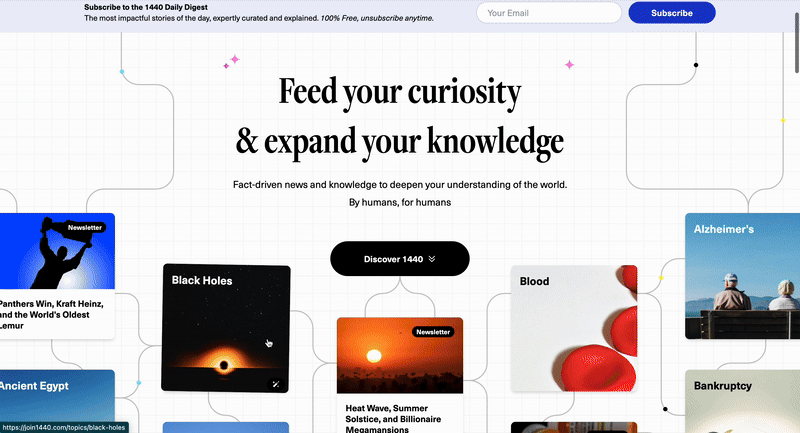
The 3 Gurus of 90s Web Design 💻🤓
How did we get from basic HTML to stunning modern websites?
The answer lies in a 1997 battle between three web design legends.
Their clash shaped the entire future of the internet.
Meet the Three Musketeers
Picture this: the web is exploding, but it's still pretty ugly. Enter three very different solutions:
- David Siegel: The HTML Terrorist 🎨
Stanford-trained designer (with Pixar experience) who used creative "hacks" for visual perfection. Embraced Flash immediately for visual perfection, didn't care about browser compatibility. - Jakob Nielsen: The Web Sheriff 👮♂️
Opposite approach: "Get rid of superficial coolness, make websites serious business tools." Called Flash "99% bad" and championed accessibility and semantic HTML. - Jeffrey Zeldman: The Pragmatic Diplomat ⚖️
Asked: "Why can't web design be both beautiful AND standards-compliant?" Tried finding middle ground between beauty and function.- Former ad creative with eclectic background
- Embraced both CSS and Flash strategically
- Famous quote: "Imitation is the sincerest form of theft"
- Believed visual flair could coexist with proper web standards
Who won? 25+ years later:
- Nielsen: his approach eventually seemed outdated, now he's writing about AI on Substack.
- Siegel: Moved from web design to blockchain to eclectic personal interests.
- Zeldman: Still designing for the web as Executive Creative Director at Automattic (WordPress).
The lesson
Zeldman's pragmatic approach became modern web design's foundation!!
The best solutions often live in thoughtful middle ground, proving you don't have to choose between beautiful and functional! 🌟 Check out more here.
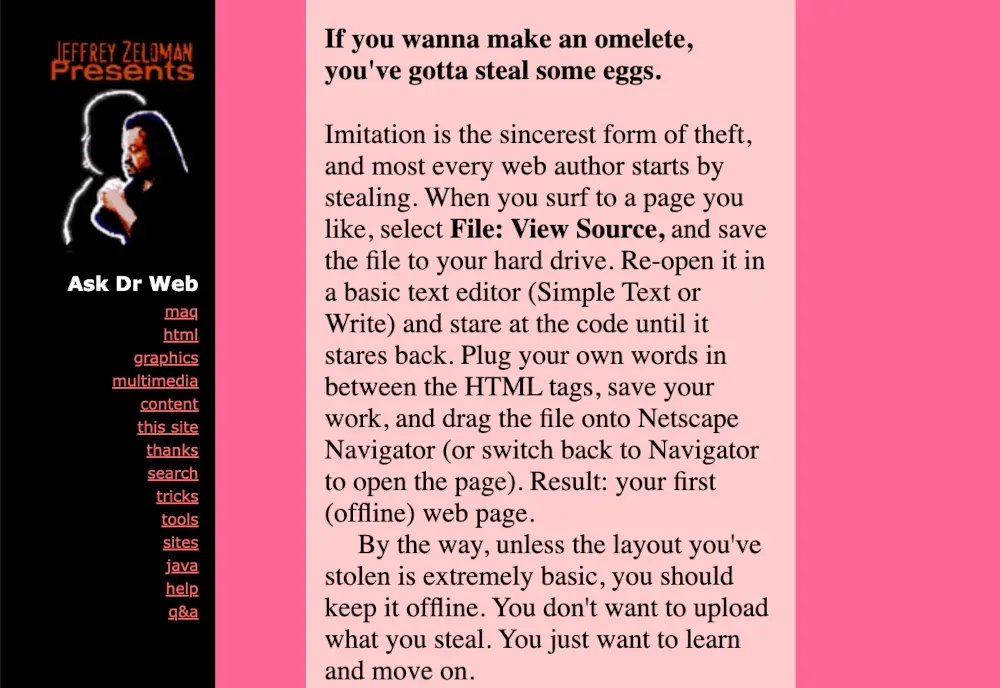
Word Bites! 📚🌟
Saudade 🇵🇹
This beautiful Portuguese word captures a deep, nostalgic longing for something absent, tinged with knowledge that what you're missing may never return.
Saudade isn't just missing someone – it's bittersweet appreciation for having experienced it at all. It's the melancholy joy of remembering a perfect summer evening or a lost love.
Unlike nostalgia (focused on past) or yearning (focused on future), saudade exists in a timeless space where love and loss dance together. It's simultaneously heartbreaking and beautiful.
Portuguese speakers say saudade is fundamental to their national character, woven into their music, literature, and worldview.
June in History 🌍
- June 5, 1968 – Robert F. Kennedy Assassinated 🕊️
Presidential candidate Robert F. Kennedy was shot in Los Angeles just after winning the California primary, ending the hopes of many Americans for progressive change during a turbulent year. - June 16, 1976 – Soweto Uprising ✊
Students in Soweto, South Africa, protested against apartheid education policies, sparking nationwide resistance that became a turning point in the anti-apartheid struggle and inspiring global solidarity movements. - June 18, 1815 – Battle of Waterloo ⚔️
Napoleon Bonaparte suffered his final defeat at Waterloo, ending his Hundred Days return and reshaping the European political landscape for generations. - June 23, 2016 – Brexit Referendum 🇬🇧
The UK voted to leave the EU, reshaping British politics and redefining the UK's relationship with Europe. - June 26, 2015 – Marriage Equality in the US 💍
The Supreme Court legalized same-sex marriage in all 50 states, marking a watershed moment for LGBTQ+ rights.
That's all for today. Stay tuned for the next coffee with me in July (my BD month)!
You can also find me writing about Product management on LinkedIn, my second blog Product Palette, rating movies on IMDB, or making playlists on Spotify.
You're one of curious humans reading this. If there are topics you want me to explore, send them my way. Ciao! ☕
